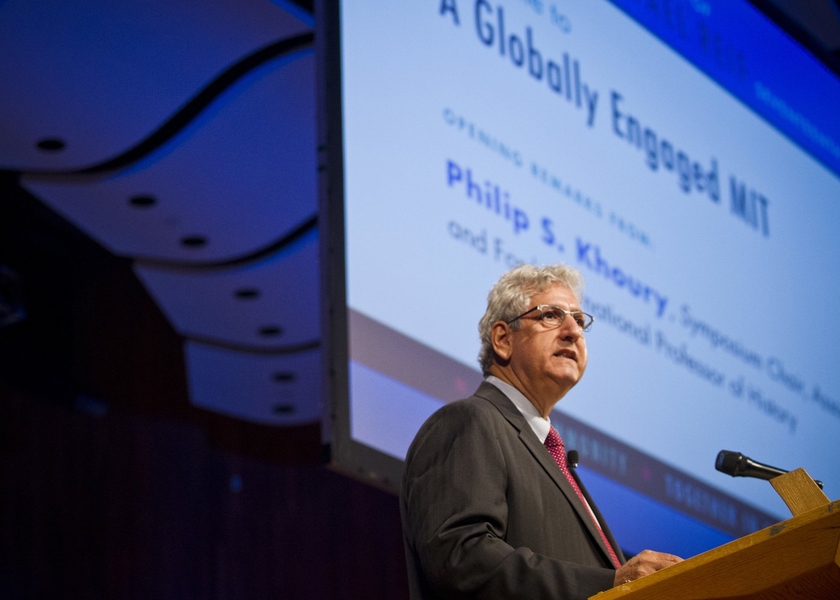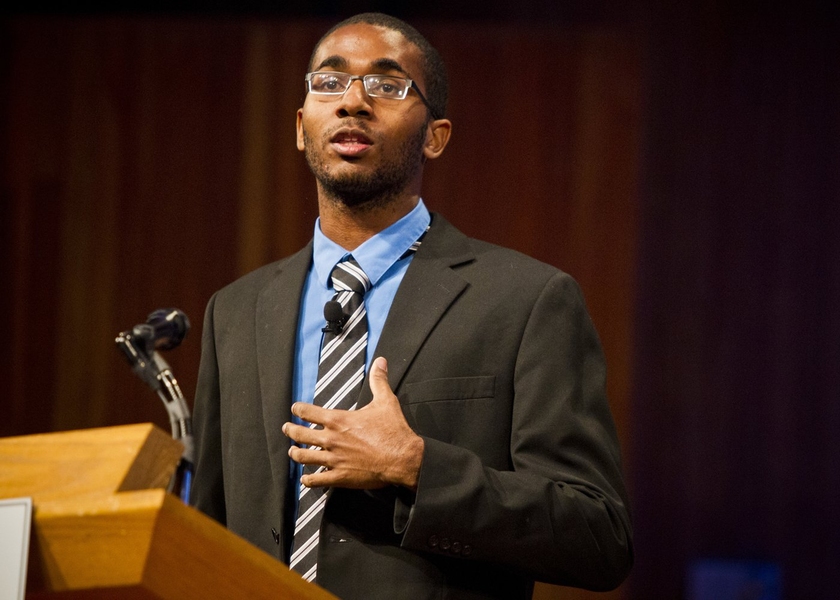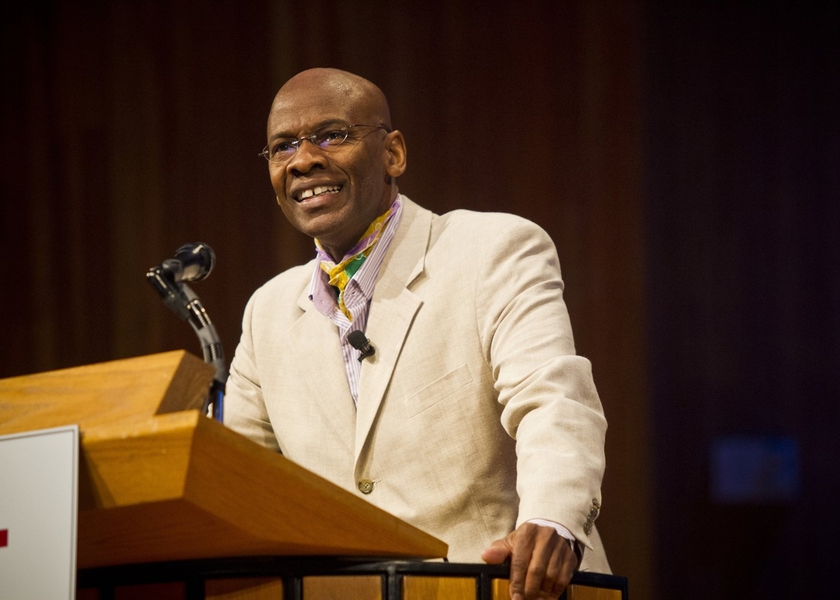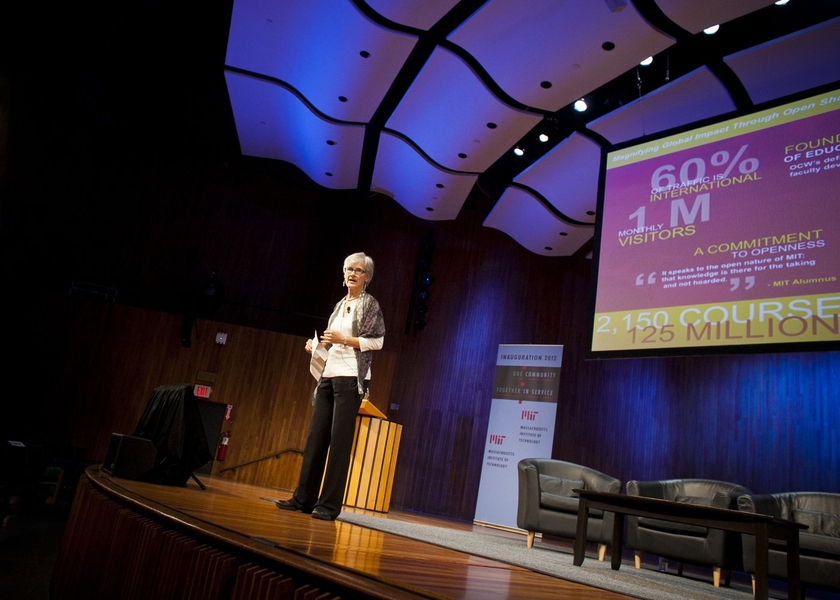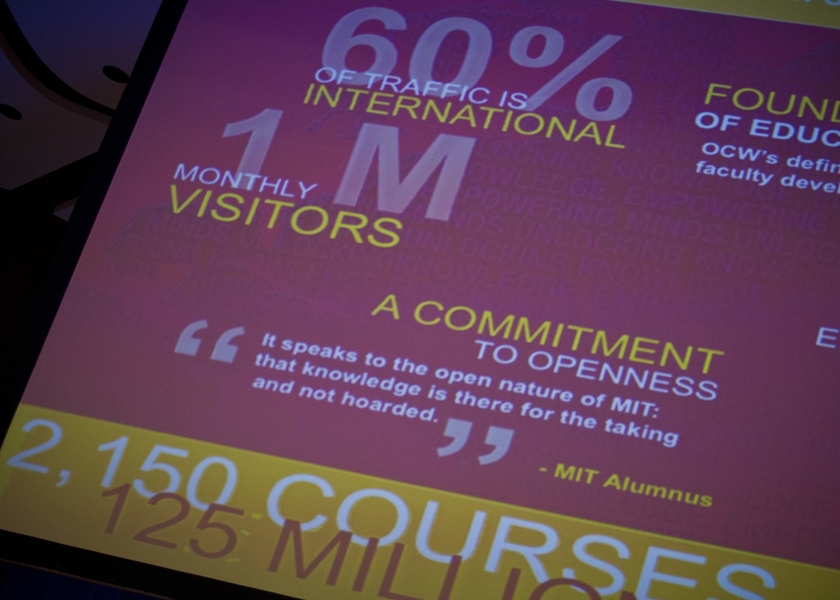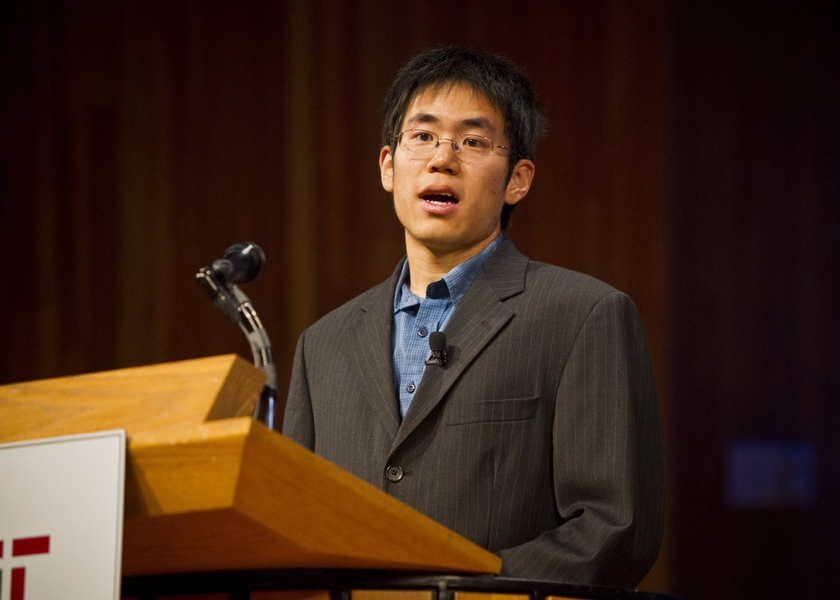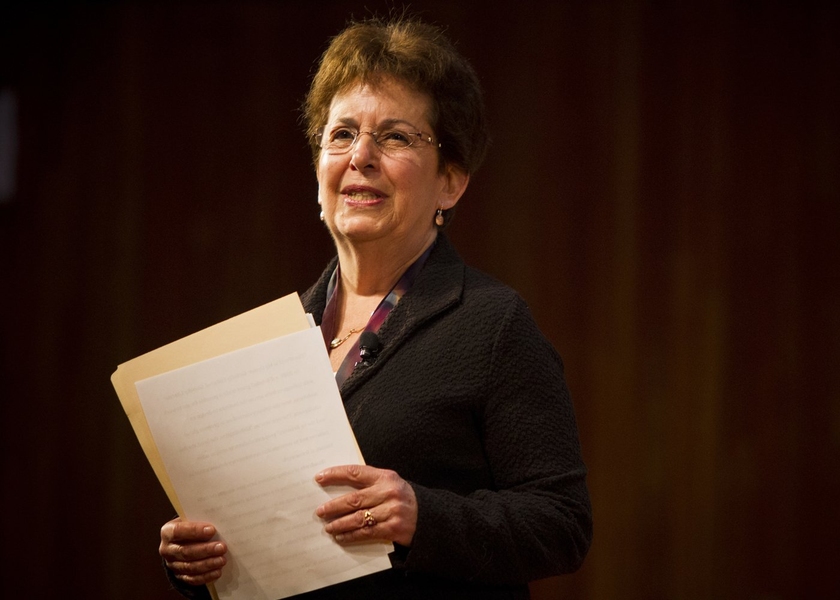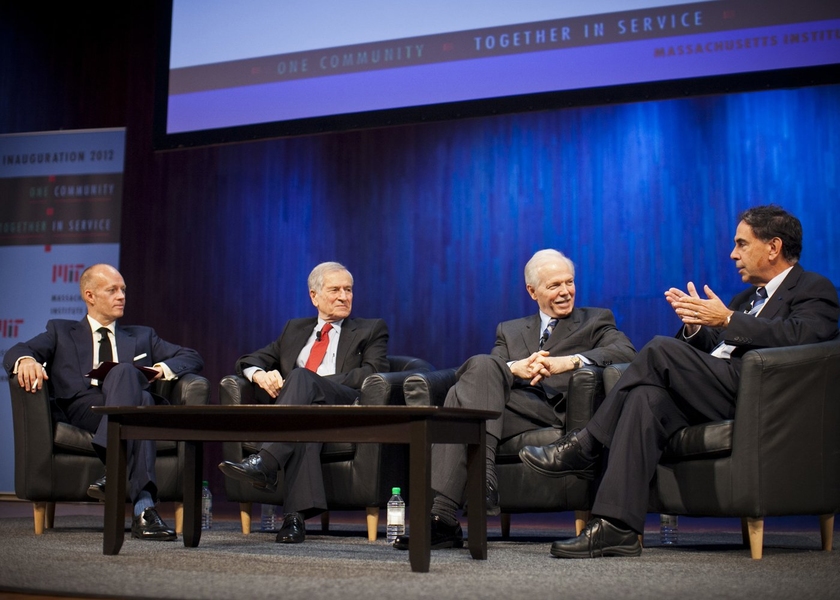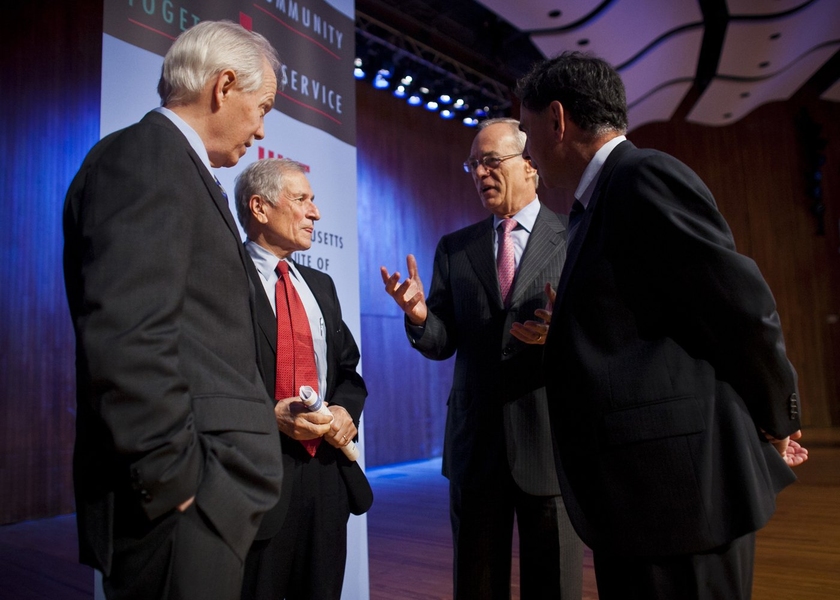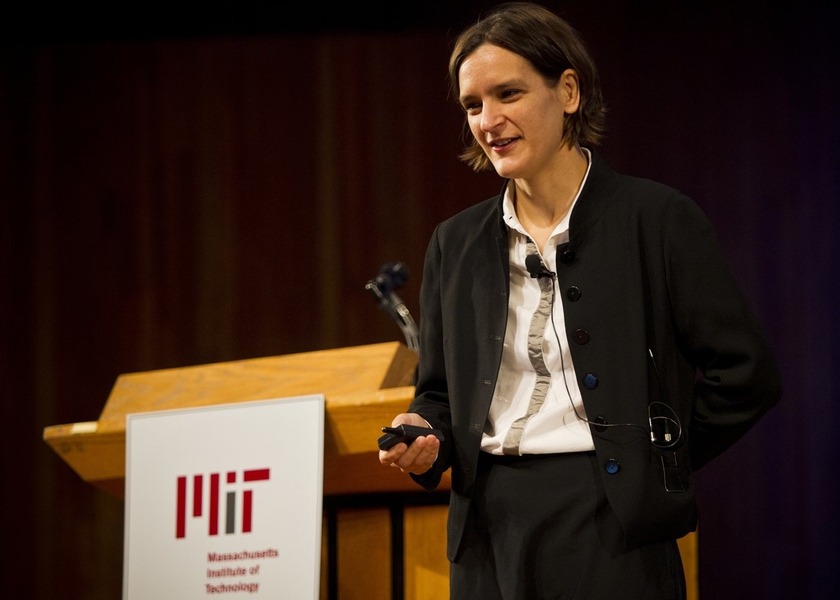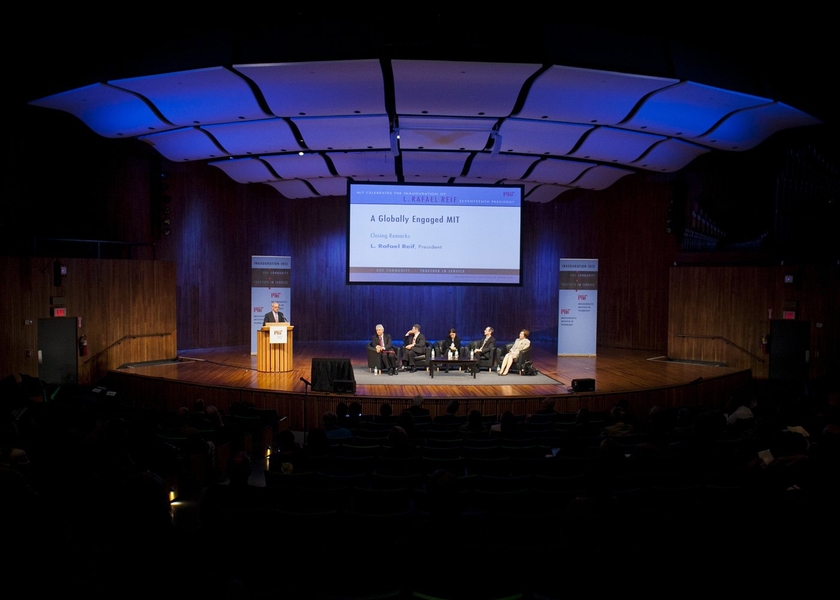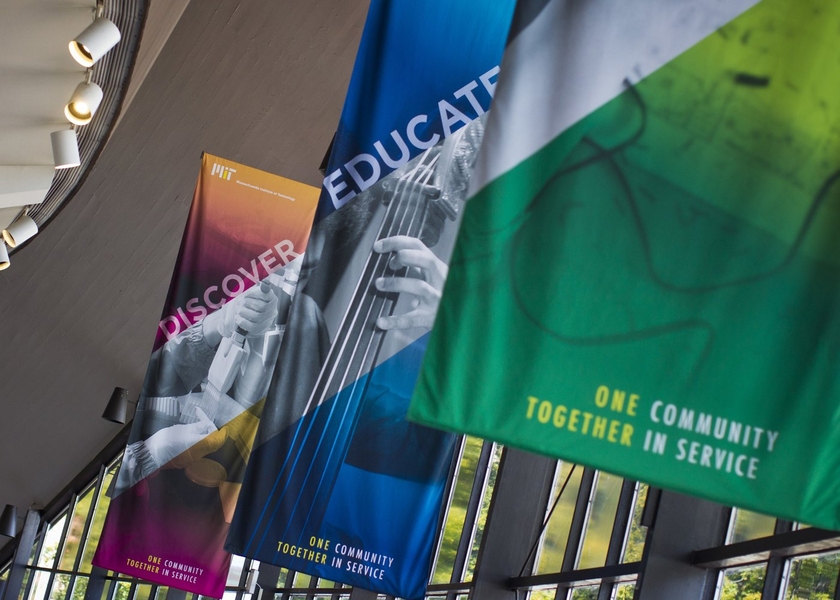MIT’s reach in research and education extends far beyond Cambridge — so global engagement was a natural topic for a Thursday symposium keyed to the inauguration of President L. Rafael Reif.
Nearly two dozen MIT faculty, students and alumni spoke about their own international experiences, what they learned, and what MIT can offer the rest of the world. The symposium, at Kresge Auditorium, was the second of three held this week as part of the inauguration celebration.
The topic was a fitting one for a president who has been an integral part of MIT’s efforts to connect with the world at large. “No one has been more deeply engaged in promoting MIT’s global mission than he has,” said Associate Provost Philip Khoury, who opened the symposium.
Though programs such as MIT OpenCourseWare (OCW) and edX have brought new attention to MIT’s participation in global education, MIT is hardly a newcomer to international engagement, Khoury said. MIT’s first international students arrived in the 1870s, shortly after the Institute opened, and World War II saw an influx of European faculty. MIT began launching formal research collaborations with institutions around the world in the 1960s.
Now, according to Khoury, 30 percent of MIT’s students and 62 percent of its postdocs come from outside the United States. Some 40 percent of MIT undergraduates study abroad, and 20 percent of MIT’s research funding comes from foreign sources, he added.
“MIT is truly a large-scale global research university,” Khoury said.
There are many reasons to connect with the rest of the world, he added. Many of the world’s biggest challenges are found outside the United States, so going abroad is often necessary to fulfilling MIT’s mission of finding solutions to the world’s most pressing problems. Global outreach also helps the Institute find and engage with the world’s most talented scientists and engineers. Conversely, MIT sends its own students into the world to train them to become the “leaders of tomorrow,” Khoury said.
‘A world of possibilities’
One of those future leaders is senior Cody Coleman, who spoke about his experiences studying abroad through the Cambridge-MIT Exchange Program. An electrical engineering and computer science major who also did an internship at Google in Zurich, Coleman says he is grateful for the opportunities MIT gave him to push himself out of his comfort zone.
“I found that not only could I survive abroad, I could rise to new heights,” Coleman said. “None of that would have happened without MIT’s incredible foreign exchange programs, which open students’ eyes to a world of possibilities.”
Programs such as MIT’s D-Lab also give students an opportunity to interact with the rest of the world. Kwami Williams ’12, who grew up in Ghana, said he came to MIT with dreams of building flying cars. The aeronautics and astronautics major soon turned his attention to other projects, however, after learning that 90 percent of the world’s engineering is focused on products for the richest 10 percent of the world’s citizens. To help “battle the injustice of poverty,” Williams worked on projects such as developing inexpensive cellphone chargers.
Projects like this represent MIT’s efforts to innovate for “the other 90 percent,” says Williams, who is now a fellow at the MIT D-Lab Scale-Ups Program. “I can’t do it all alone, but I have been given the tools, skills and resources to tackle any problem in the world.”
Kevin Kung, a graduate student in biological engineering, talked about his efforts to simultaneously solve two problems facing people who live in the slums of Dar es Salaam, Tanzania: lack of trash removal and soaring energy costs. A typical family in that city spends 45 percent of its income on charcoal cooking fuel. To cut those costs, Kung is working on way to cheaply manufacture charcoal from refuse.
Kung encouraged other students to take advantage of the opportunities available to them through MIT. “If you have a great idea, you are surrounded by so many resources. As long as you make a very convincing case, it’s most likely going to happen,” he said.
Making a difference
Michel DeGraff, an associate professor of linguistics and philosophy, talked about a program he recently launched to offer online education in science, math, engineering and technology in Haiti. Currently most education in Haiti is conducted in French, which only about 10 percent of Haitians speak, DeGraff said. The new program is the first to offer science and technology education in Creole, the language spoken by most Haitians.
Charles Harvey, a professor of civil and environmental engineering, talked about his efforts to study the accumulation and release of carbon dioxide from the tropical peat forests of Borneo. That CO2 puts the island third behind the United States and China as the world’s biggest emitters of greenhouse gases, Harvey said. By studying one of Borneo’s last remaining peat forests, Harvey hopes to learn more about how to manage those forests to minimize further carbon release.
Esther Duflo, the Abdul Latif Jameel Professor of Poverty Alleviation and Development, talked about the need to use scientific methods to study poverty. She described a recent study in which she found that offering people in India a kilogram of lentils boosted child immunization rates from 6 percent to 38 percent. Focusing on these narrower questions not only offers immediate guidance for scientists who are trying to help the poor, but may also eventually help answer larger questions, such as how to end poverty, Duflo said.
‘Openly sharing our knowledge’
MIT’s reach has been further extended by the establishment of three universities far from Cambridge, all led by MIT professors: Singapore University of Technology and Design (SUTD), Masdar Institute of Science and Technology in the United Arab Emirates, and Skolkovo Institute of Science and Technology in Russia. Those university presidents — Thomas Magnanti, Fred Moavenzadeh and Edward Crawley, respectively, were on hand for a panel discussion at Thursday’s symposium.
MIT’s goal in helping to establish those institutions is to help spread the Institute’s culture of innovating to drive economic growth, while allowing the institutions to try their own systems and adapt to the needs of the countries where they are located, said Crawley, a professor of aeronautics and astronautics and engineering systems at MIT.
“MIT has a marvelous culture, and I’m trying to find ways to extract that culture and clone that culture,” Crawley said.
Being so new, the international universities have the chance to experiment with different structures, said Magnanti, who pointed out that SUTD does not have academic departments and does not offer traditional degrees. Larger, well-established universities can learn from SUTD’s results, he added.
MIT has also reached millions of students through OCW and now edX, the multi-institution online-learning initiative that is offering several courses this fall.
Course materials for about 2,100 MIT classes are available on OCW; these have been translated into a dozen languages. Since OCW was launched in 2001, 125 million people have accessed the courses found there, and 60 percent of its users live outside the United States, said Cecilia d’Oliveira, executive director of OCW.
“OCW has magnified MIT’s impact through a very simple but powerful thing, and that is openly sharing our knowledge,” d’Oliveira said.
